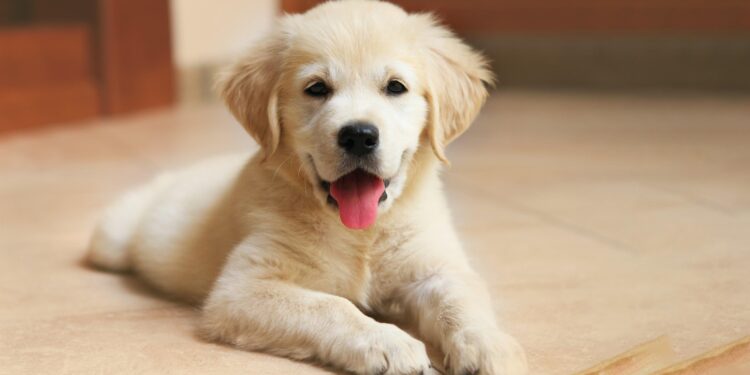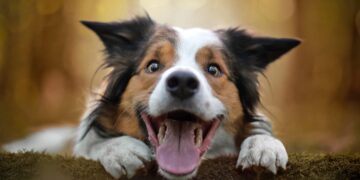Table of Contents
Section 1: Introduction: The Mistake That Nearly Cost a Family Everything
Early in my career, long before earning my certification as a canine behavior consultant, I made a mistake.
It was a mistake born of conventional wisdom and good intentions, but it’s one that has haunted me and shaped every piece of advice I’ve given since.
A young family, kind and well-meaning but with no experience handling powerful dogs, came to me for guidance.
They lived in a remote area and wanted a “guard dog” for peace of mind.
Following the popular logic of the time, we focused on appearance and reputation.
They chose a muscular, imposing-looking dog from a backyard breeder, a dog that certainly looked the part.1
The peace of mind they sought never came.
Instead, a low-grade, simmering anxiety began to fill their home.
The dog was a bundle of unstable nerves, unable to distinguish between the mail carrier and a genuine threat.2
He barked incessantly and unpredictably.
The family began to walk on eggshells, managing the dog’s reactions rather than enjoying his presence.
The climax arrived on a sunny afternoon when a neighbor’s child, chasing a ball, ran into their yard.
The dog’s reaction was instantaneous and terrifying—a stiffened body, a low growl, and a lunge that was stopped only by a frantic parent.
No one was physically harmed, but the damage was done.
The animal they had brought into their home to protect their children had become the single greatest threat to them.
That incident was my crucible.
It forced me to confront the profound, dangerous gap between the idea of a guard dog and the complex reality of a true family guardian.
The common approach, which prioritizes intimidation and aggression, is not just flawed—it is a direct path to failure and potential tragedy.
Choosing a family protector is not about selecting a weapon; it is about thoughtfully integrating a highly specialized, living security system into the delicate ecosystem of a family.
This report will dismantle the dangerous myths that lead to these failures and replace them with a professional framework designed to help you make a decision that is safe, successful, and life-enriching.
Section 2: The “Guard Dog” Myth: Why We’re Asking the Wrong Questions
The path to choosing a family guardian is littered with dangerous misconceptions.
Before we can build a proper framework for selection, we must first clear away the rubble of these flawed ideas.
Deconstructing the “Tough Dog” Fallacy
The most pervasive myth is that a good guard dog is an aggressive one.
Many people actively look for traits like reactivity, intense suspicion of strangers, and a “high-strung” nature, believing these are the hallmarks of a protector.1
This could not be more wrong.
In the world of professional protection, these are not assets; they are signs of instability.
A dog that is perpetually on high alert, unable to relax or discern threats, is a liability.3
A truly effective guardian is confident, clear-headed, and calm, capable of assessing a situation before reacting.4
A dog that charges the fence at every passerby is not a good guard dog; it is an uncontrolled and unpredictable animal.1
The “Disney Model” Misconception
Hollywood and popular media have done a great disservice to working breeds, creating what one training resource aptly calls “the Disney model”.2
We are led to believe that a German Shepherd is born a perfectly discerning hero like Rin Tin Tin, or that any Rottweiler will instinctively know when and when not to act.
This fantasy completely ignores the thousands of hours of dedicated, expert training that go into producing a stable and reliable working dog.2
No dog, regardless of breed, comes out of the box as a well-mannered and discerning canine citizen.
That level of performance is built, not born.
The Owner-Dog Mismatch
Perhaps the most critical failure point in selecting a guardian dog is the mismatch between the dog’s needs and the owner’s capabilities.
A dog’s breed is only half of the equation; the owner’s experience, lifestyle, and temperament are just as, if not more, important.
A passive owner who is easily flustered or avoids confrontation is a disastrous match for a powerful, assertive breed like a Rottweiler or German Shepherd.2
These dogs require strong, consistent leadership.
Without it, they may take it upon themselves to decide who and when to protect, a scenario that can lead to tragedy.
Similarly, a high-drive working dog like a Belgian Malinois in a low-activity home is a ticking time bomb.
Without sufficient mental and physical stimulation, these intelligent animals will become frustrated, neurotic, and destructive.2
This fundamental misunderstanding of a dog’s needs versus an owner’s lifestyle is a primary source of failure.
The most important question is not “What is the best guard dog?” but “Am I the right owner for a protection-bred dog, and which one fits my specific capabilities?” This reframes the entire process from one of simple selection to one of serious self-assessment.
| Owner Profile | Dog Profile: High-Drive Working Line (e.g., Belgian Malinois) | Dog Profile: Powerful Guardian Breed (e.g., Rottweiler) | Dog Profile: Independent Flock Guardian (e.g., Great Pyrenees) | Dog Profile: General-Purpose Family Dog (e.g., Labrador) |
| The Inexperienced & Passive | Outcome: Dog becomes neurotic, destructive, and potentially dangerous due to lack of stimulation and clear leadership.2 | Outcome: Dog assumes leadership role, making independent and often dangerous protection decisions. High risk of biting incidents.2 | Outcome: Dog’s independent nature becomes unmanageable, leading to nuisance barking and territorial issues that the owner cannot control. | Outcome: Generally successful, though lack of consistent training may lead to common behavioral problems like jumping or pulling. |
| The Busy & Distracted | Outcome: Severe behavioral issues from under-stimulation. The dog may “create its own job,” such as destroying furniture or escaping.2 | Outcome: Lack of consistent training and socialization can lead to suspicion of strangers and potential aggression.6 | Outcome: Dog’s need for a “job” goes unfulfilled, resulting in frustration and potentially destructive behavior. | Outcome: Dog may develop separation anxiety or become under-exercised, but is less likely to become a significant liability. |
| The “Tough Guy” Enthusiast | Outcome: Owner may intentionally or unintentionally encourage aggression, creating a highly dangerous and unstable animal.1 | Outcome: High risk of creating a liability. The dog’s power combined with an owner focused on aggression is a recipe for disaster. | Outcome: Owner’s confrontational style clashes with the dog’s independent nature, leading to a breakdown in trust and communication. | Outcome: Mismatch in temperament. The dog’s friendly nature may frustrate an owner looking for an intimidating “status” dog. |
| The Responsible & Committed | Outcome: A successful partnership is possible with significant commitment to professional training and daily activity. | Outcome: A stable, reliable, and loving guardian can be developed through consistent leadership and early socialization. | Outcome: A successful partnership can be formed if the owner understands and respects the dog’s independent nature and provides appropriate outlets. | Outcome: An excellent family companion and a capable deterrent, representing the most straightforward path to success. |
Section 3: The Epiphany: A Family Guardian Is a Living Security System, Not a Weapon
After the failure with that first family, I dove into the world of professional canine behavior and training.
The turning point in my understanding came from a completely unexpected field: residential security design.
I realized that the principles used to design a comprehensive home security system offered a perfect, non-emotional, and effective framework for selecting and integrating a canine guardian.7
This paradigm shift was profound.
It moved the entire process away from the subjective and dangerous focus on a dog’s “toughness” and toward a systematic analysis of its function within a layered security strategy.
A professional security system isn’t just a loud alarm; it’s a multi-layered approach designed to deter, detect, monitor, and respond.8
The goal is to find a dog that embodies these same layers in a balanced, stable, and family-appropriate Way.
The Four Layers of Security Framework
The professional framework for residential security consists of four distinct layers, each serving a critical function.
When applied to a canine, this model provides a powerful tool for evaluation 7:
- Prevention/Deterrence: The outermost layer. Its goal is to stop a threat before it even starts by making your home an unattractive target.
- Detection: The second layer. Its purpose is to alert you to a potential breach or anomaly in your environment.
- Surveillance: The third layer. This involves the ongoing monitoring of the property and, most importantly, the people within it.
- Response: The final and most critical layer. This is the system’s ability to take appropriate, measured action once a threat has been confirmed.
By using these four layers as our analytical lens, we can move beyond breed stereotypes and evaluate a dog based on its functional capabilities as a true family guardian.
Section 4: Deconstructing the Guardian: The Four Layers of Canine Protection
Using our security framework, we can now break down the essential traits of a superior family guardian, not by breed, but by function.
Layer 1: Prevention (The Power of Presence)
The most effective security encounter is the one that never happens.
The vast majority of residential crimes are opportunistic; criminals look for easy targets and will bypass a home that presents a credible risk.5
This is the dog’s first and most frequently used function.
- Physical Presence: A large, confident-looking dog is a powerful visual deterrent.10 The mere sight of a Great Dane, Bernese Mountain Dog, or Bullmastiff can be enough to persuade a potential intruder to move on, even if those breeds are less likely to engage in an aggressive response.6
- The Alert Bark: A deep, authoritative bark is an auditory fence. It signals to anyone outside that a capable dog is on the premises and alert to their presence.5 This alone is often enough to thwart a potential break-in.
Layer 2: Detection (The Ultimate Early-Warning System)
This layer functions as the home’s living motion sensors and perimeter alarms.7
A dog’s senses are far more acute than a human’s, providing an invaluable early warning.
- Alertness & Keen Senses: The ability to hear a car door down the street or smell an unfamiliar person near the property line gives the family precious time to react.4
- Territorial Awareness: A good guardian has a natural understanding of its territory and who belongs there. This is not the same as indiscriminate aggression; it is a discerning awareness of the environment.4
- Discernment: This is the critical software for the detection system. A dog that barks frantically at everything—falling leaves, neighbors, the mail carrier—is a faulty alarm that will eventually be ignored.1 A superior guardian is intelligent enough to differentiate between normal daily occurrences and a genuine anomaly that warrants an alert.14
Layer 3: Surveillance (The Loyal, Watchful Eye)
Unlike a fixed security camera, a dog is a mobile, intuitive surveillance unit that is emotionally connected to the people it protects.7
This layer is about constant, quiet monitoring.
- Loyalty and Bonding: A deep, unshakable bond with the family is the core programming that drives the dog’s protective instinct. A dog does not protect a house; it protects its family.10 This loyalty ensures the dog is naturally inclined to stay near its charges and monitor their well-being.
- Handler Focus & Attunement: The best guardians are highly attuned to their owner’s emotional state. They can read subtle cues of calm or alarm and adjust their behavior accordingly.1 This emotional intelligence allows the dog to act as a partner in security, not just a tool.
Layer 4: Response (The Calibrated Guardian)
This is the most critical, most powerful, and most misunderstood layer.
This is the dog’s capacity for active engagement with a confirmed threat.
It is here that the distinction between a stable guardian and a dangerous liability becomes sharpest.
This is not about aggression; it is about controlled, appropriate action.
- Stable Temperament: This is the absolute, non-negotiable foundation for the entire system. The dog must be calm, confident, and clear-headed, never acting out of fear, anxiety, or reactivity.4 A fearful dog is an unpredictable dog, and an unpredictable powerful dog is a massive danger.
- Courage & Confidence: In a true threat situation, the dog must possess the bravery to stand its ground and confront the danger without panicking or backing down.15
- High Trainability & Controllability: The dog must be intelligent and eager to follow commands instantly, especially the command to stop or “stand down”.10 A guardian that cannot be called off is not a protector; it is an uncontrollable weapon and a legal and moral nightmare.3
It is the potential failure of this Response layer that demands the most serious consideration.
Dog bite statistics can be alarming, with powerful breeds like Pit Bulls and Rottweilers often cited in cases of severe injury or fatality.17
While some studies show that breed identification in bite cases can be unreliable and that smaller dogs can be more prone to aggression, the data highlights a crucial point when viewed through our framework.19
The issue is not just the
propensity to bite, but the consequence of the bite.
A “response failure” from a small terrier might result in a minor injury.
A “response failure” from a 120-pound Rottweiler can be catastrophic.
This means that for any large, powerful guardian breed, the integrity of the Response layer—defined by a rock-solid temperament and absolute owner control—is exponentially more critical.
The risk is not inherent in the breed’s potential for protection, but in the devastating potential for system failure if the owner and training are anything less than flawless.
Section 5: The Contenders: Evaluating Top Breeds Through the Security Framework
No single breed is the “best” for every family.
The goal is to find the best fit for your specific lifestyle, experience, and security needs.
Here, we analyze three popular guardian breeds through our four-layer framework to illustrate how this system works in practice.
| Criteria | German Shepherd | Rottweiler | Bullmastiff |
| Prevention Score | High: Imposing look, strong reputation as a police and military dog. | Very High: Extremely powerful and muscular build presents a formidable deterrent. | Very High: Massive size and broad head are exceptionally intimidating to intruders. |
| Detection Score | Very High: Extremely alert and vocal. Prone to barking at perceived anomalies. | Medium-High: Naturally wary of strangers and highly alert, but often less prone to nuisance barking. | Medium: Less likely to bark without serious cause. A quiet but watchful presence. |
| Surveillance Score | Very High: Deep handler focus and bond; highly attuned to owner’s emotions. | High: Deeply devoted to its family “pack” and constantly watchful over them. | High: Loyal and observant, known for staying close to family members. |
| Response Score | High: Courageous and capable, but high drive requires extensive, expert training for control. | Very High: Immense power and confidence. Requires an experienced, firm, and consistent handler. | Medium-High: Fearless and powerful, but with a higher threshold for engagement and a lower prey drive. |
| Suitability with Children | Good: Generally good when raised with children, but high energy can be overwhelming for toddlers. | Good: Can be patient and gentle, but sheer power necessitates constant supervision with young children. | Excellent: Known for being patient, gentle, and tolerant with children. A “gentle giant.” |
| Energy Level | High: Requires significant daily exercise and mental stimulation to prevent behavioral issues. | Medium-High: Needs regular, structured exercise but is less intense than a German Shepherd. | Medium-Low: Requires daily walks but is generally a lower-energy dog, content to relax indoors. |
| Required Owner Experience | High: Requires an active owner committed to ongoing training and activity. | Very High: Not for novice or passive owners. Requires a confident and experienced leader. | Medium-High: Stubbornness requires early and consistent training from an experienced owner. |
Breed Profile 1: The German Shepherd (The Versatile Specialist)
The German Shepherd is renowned for its intelligence, versatility, and unwavering loyalty.14
They are highly trainable and excel in nearly any task, from police work to family companionship.22
- Framework Evaluation: The GSD scores highly across all four layers. Its appearance and reputation make for excellent Prevention. It is exceptionally alert, providing top-tier Detection. The deep bond it forms with its family makes for superb Surveillance.16 Its courage and trainability give it a strong
Response capability. However, its high drive and energy are a double-edged sword. Without a “job” to do and an owner who can manage that energy through consistent training, a GSD can become neurotic and destructive.5
Breed Profile 2: The Rottweiler (The Calm & Confident Powerhouse)
The Rottweiler is a powerful, confident dog with a natural guarding instinct and a deep loyalty to its family.23
When well-bred and properly raised, they are calm, courageous, and discerning.
- Framework Evaluation: The Rottweiler is a heavyweight in the Prevention layer due to its imposing physique. Its Detection is solid, as it is naturally wary of strangers without being overly reactive.10 Its devotion to its family ensures excellent
Surveillance. The Response layer is where the Rottweiler is most formidable and requires the most expertise. Its immense power means that the owner must be an experienced, confident leader capable of establishing and maintaining absolute control.2 This is not a breed for a first-time dog owner.25
Breed Profile 3: The Bullmastiff (The Gentle Deterrent)
Originally bred as the “Gamekeeper’s Night Dog,” the Bullmastiff was developed to track and hold poachers without mauling them.26
This history has shaped a dog that is a formidable guardian yet remarkably docile with its family.
- Framework Evaluation: The Bullmastiff’s massive size gives it a top-tier Prevention score. Its Detection is more measured; it is less prone to barking but will alert to a serious threat.28 It is a loyal and watchful
Surveillance dog. Its Response is powerful and fearless, but it has a higher threshold for action and a lower prey drive than many other guardian breeds.29 They are known for their gentle and patient nature with children, but their sheer size requires supervision.30 Their primary challenge can be a stubborn streak, making early and consistent training essential.32
Section 6: The Human Factor: Your Role as System Administrator
The most advanced security system in the world is useless—or even dangerous—in the hands of an incompetent operator.
When you bring a guardian dog into your home, you become the system administrator.
The dog’s success or failure rests squarely on your shoulders.
The Non-Negotiables of Ownership
- Leadership & Consistency: A protection-bred dog does not need a tyrant, but it absolutely requires a calm, confident leader who provides structure.15 Rules and boundaries must be established early and enforced consistently. This structure is not about punishment; it is about providing the clarity and predictability that a working dog craves to feel secure.2
- Time & Energy Commitment: Meeting the dog’s needs is a security imperative. A bored German Shepherd or an under-exercised Rottweiler is not a happy companion or a reliable guardian; it is a liability waiting to happen.3 You must be honest about the time you can dedicate to daily exercise, play, and training.
- Finding a Reputable Breeder: Your dog’s genetic foundation is critical. A reputable breeder prioritizes stable temperament and health above all else.33 They will be transparent, provide health clearances, and allow you to meet the puppy’s parents to assess their temperament.11 Avoid sources that seem to prioritize aggression or an intimidating look, as this is a major red flag.
The Critical Role of Professional Training
Partnering with a qualified professional trainer is not optional; it is essential.
However, the world of dog training is largely unregulated, and choosing the wrong trainer can do more harm than good.
Most families are unaware of the complex landscape of professional certifications and methodologies, putting them at significant risk of receiving poor advice.
To navigate this, you must learn how to properly vet a trainer.
Simply having a business card that says “dog trainer” is not enough.
Here is a checklist to help you find a true professional:
- Ask for Certifications: Ask specifically what certifications they hold. Look for credentials from respected, independent organizations. A Certified Professional Dog Trainer – Knowledge Assessed (CPDT-KA) has passed a comprehensive exam on learning theory and ethics. A CPDT-KSA has also demonstrated their hands-on skills. For more complex issues, a Certified Behavior Consultant Canine (CBCC-KA) has advanced knowledge in behavior modification.34
- Ask About Methods: Inquire about their training philosophy. Look for trainers who use modern, science-based, and humane methods. Be wary of anyone who relies heavily on punitive or intimidation-based techniques, as this can damage a dog’s temperament and trust.35
- Ask for References: Request contact information for past clients, specifically families with similar breeds and goals.
- Observe a Class: Ask to sit in on a training session. The environment should be calm, controlled, professional, and positive for both dogs and humans.
- Understand the Goal: Be clear that you are training a family guardian, not a sport dog or a police K9. The skills are different. Your dog needs to learn obedience, control, and discernment in a home environment, which is a distinct specialty.36
Section 7: Conclusion: Integrating Your Guardian for a Safer, Richer Life
The journey to finding the right family guardian begins with a crucial shift in perspective: you are not buying a product; you are building a system.
It requires abandoning the dangerous myths of aggression and instead embracing a professional framework of Prevention, Detection, Surveillance, and Response.
This process demands honest self-assessment of your own capabilities, careful selection of a dog whose traits match your lifestyle, and an unwavering commitment to professional training and lifelong leadership.
I often think back to that family from my early days and the fear in their eyes when their “protector” became a threat.
I contrast that memory with another, more recent one.
A family I worked with used this exact framework.
They recognized their moderate energy level and experience level, and after careful consideration, chose a well-bred Bullmastiff.
They worked diligently with a certified trainer from the day the puppy came home.38
Today, their dog is a perfect embodiment of the guardian’s paradox resolved.
He is an adoring, patient playmate for their children, a gentle giant who lounges by the fire.
He is also a formidable and watchful presence, a silent deterrent whose stability and confidence bring true peace of mind to the household.39
The responsibility of owning a canine guardian is immense, but the reward is unparalleled.
It is not just the security of a safer home, but the profound, enriching bond that comes from a true partnership with a loyal, intelligent, and capable animal.
It is a commitment that, when made correctly, does not just protect your life—it deeply enhances it.
Works cited
- [Discussion] Let’s talk about “guard dogs” – Reddit, accessed August 15, 2025, https://www.reddit.com/r/dogs/comments/4e2t19/discussion_lets_talk_about_guard_dogs/
- Huge Mistakes People Make When Looking for a Dog – McCann …, accessed August 15, 2025, https://www.mccanndogs.com/blogs/articles/huge-mistakes-people-make-when-looking-for-a-dog
- What To Know Before Buying A Protection Dog – Performance K9 Training, accessed August 15, 2025, https://performancek9training.com/what-to-know-before-buying-a-protection-dog/
- 7 Guard Dog Traits You Absolutely Need for True Protection – Priority 1 Canine, accessed August 15, 2025, https://priority1canine.com/blog/post/guard-dog-traits-you-need-true-protection
- Looking for a guard dog, and these are the breeds I’ve come down to. Suggestions? : r/Pets, accessed August 15, 2025, https://www.reddit.com/r/Pets/comments/16muq9s/looking_for_a_guard_dog_and_these_are_the_breeds/
- Best Guard Dogs for Protection & Family | Seattle Vets – Aurora Veterinary Hospital, accessed August 15, 2025, https://www.auroraveterinaryhospital.com/site/blog/2022/10/21/best-guard-dogs-family
- Principles of Effective Residential Security [infographic] | Safe N …, accessed August 15, 2025, https://safensoundinc.com/security-solutions-blog/principles-of-effective-residential-security-infographic/
- Securing Your Space: Ultimate Guide – Number Analytics, accessed August 15, 2025, https://www.numberanalytics.com/blog/ultimate-guide-security-systems-interior-architecture
- Safety and security – | YourHome, accessed August 15, 2025, https://www.yourhome.gov.au/live-adapt/safety-and-security
- What is the Best Family Protection Dog Breed? Key Traits to …, accessed August 15, 2025, https://www.totalk9.co.uk/news/dog-advice/what-is-the-best-family-protection-dog-breed-key-traits-to-consider/
- Best Guard Dogs for a Family | Hermitage Vets, accessed August 15, 2025, https://www.hermitageanimalclinic.com/site/blog/2023/12/15/best-guard-dogs-family
- 10 Best Guard Dogs for Families That Are Protective and Gentle | SPORTMiX®, accessed August 15, 2025, https://www.sportmix.com/10-best-guard-dogs-for-families-that-are-protective-and-gentle/
- The Ultimate Guide to Luxury Home Security Systems | Joyce Rey, accessed August 15, 2025, https://joycerey.com/blog/the-ultimate-guide-to-luxury-home-security-systems/
- Why is The German Shepherd Such A Strong Breed for Protection Work? – Scott’s K9, accessed August 15, 2025, https://scottsk9.com/german-shepherd-protection-dogs/
- The Top 5 Qualities to Look for in a Protection Dog – Scott’s K9, accessed August 15, 2025, https://scottsk9.com/protection-dog-qualities/
- Why German Shepherds Make the Best Friendly Guard Dogs – YouTube, accessed August 15, 2025, https://www.youtube.com/watch?v=GNk9F3fiMag
- Quick Statistics – U.S. Dog Bite Statistics – DogsBite.org, accessed August 15, 2025, https://www.dogsbite.org/dog-bite-statistics-quick-statistics.php
- Dog Attacks by Breed 2024 – Dog Bite Statistics & State Fatality Data, accessed August 15, 2025, https://www.advancedbackandneckcare.com/dog-attacks-by-breed-2024-dog-bite-statistics-state-fatality-data
- Analysis of Pediatric Facial Dog Bites – PMC, accessed August 15, 2025, https://pmc.ncbi.nlm.nih.gov/articles/PMC3820741/
- The Role of Breed in Dog Bite Risk and Prevention – American Veterinary Medical Association, accessed August 15, 2025, https://www.avma.org/sites/default/files/resources/dog_bite_risk_and_prevention_bgnd.pdf
- www.akc.org, accessed August 15, 2025, https://www.akc.org/dog-breeds/german-shepherd-dog/#:~:text=There%20are%20many%20reasons%20why,in%20defense%20of%20loved%20ones.
- The German Shepherd | Breed information and care guide – 24Petwatch, accessed August 15, 2025, https://www.24petwatch.com/blog/german-shepherd-guide
- Are Rottweilers Good Guard Dogs? Temperament, Facts & FAQ – Dogster, accessed August 15, 2025, https://www.dogster.com/lifestyle/are-rottweilers-good-guard-dogs
- Rottweilers vs. Other Guard Dog Breeds: How They Stand Out. – Barfindia, accessed August 15, 2025, https://barfindia.com/blogs/blog/rottweilers-vs-other-guard-dog-breeds
- www.quora.com, accessed August 15, 2025, https://www.quora.com/Are-Rottweilers-suitable-as-guard-dogs-for-families-with-children#:~:text=Rottweilers%20are%20excellent%20family%20dogs,a%20first%20time%20dog%20owner.
- www.orvis.com, accessed August 15, 2025, https://www.orvis.com/bullmastiff.html#:~:text=Bullmastiffs%20are%20highly%20protective%20of,Bullmastiffs%20make%20excellent%20guard%20dogs.
- What to Know About Bullmastiffs – WebMD, accessed August 15, 2025, https://www.webmd.com/pets/dogs/what-to-know-about-bullmastiffs
- Bullmastiff Dog Breed Health and Care – PetMD, accessed August 15, 2025, https://www.petmd.com/dog/breeds/bullmastiff
- The Bullmastiff: The Fearless and Loyal Guardian, accessed August 15, 2025, https://www.zealandiapets.com/pages/the-bullmastiff-the-fearless-and-loyal-guardian
- Bullmastiff breed guide: Care, training, and fun facts – BorrowMyDoggy, accessed August 15, 2025, https://www.borrowmydoggy.com/doggypedia/dog-breed-guides-bullmastiff
- How Are BULLMASTIFFS With Children And Pets – YouTube, accessed August 15, 2025, https://www.youtube.com/watch?v=3ufzPClhGNg
- Bullmastiff Dog Breed Information – American Kennel Club, accessed August 15, 2025, https://www.akc.org/dog-breeds/bullmastiff/
- HOW TO CHOOSE THE BEST PROTECTIVE FAMILY DOG – Scott’s K9, accessed August 15, 2025, https://scottsk9.com/how-to-choose-the-right-protection-dog-for-you-and-your-family/
- Dog Trainer Certifications | School for Dog Trainers, accessed August 15, 2025, https://internationaldogtrainerschool.com/dog-trainer-certifications/
- Certifications – International Association of Canine Professionals, accessed August 15, 2025, https://iacpdogs.org/certifications/
- How To Buy A Protection Dog… The Right Way! – YouTube, accessed August 15, 2025, https://www.youtube.com/watch?v=tcDZ19OdA2E
- 3 Ways To Choose A Guard Dog That Is Right For You – Scott’s K9, accessed August 15, 2025, https://scottsk9.com/3-ways-to-choose-a-guard-dog-that-is-right-for-you-2/
- Client Testimonials – Protection Dogs Plus, accessed August 15, 2025, https://protectiondogsplus.com/about/success-stories/
- What are the Best Dog Breeds for Protection as Guard Dogs? – American Breeder, accessed August 15, 2025, https://www.americanbreeder.com/resources/american-breeder-blog/dogs/top-guard-dog-breeds






